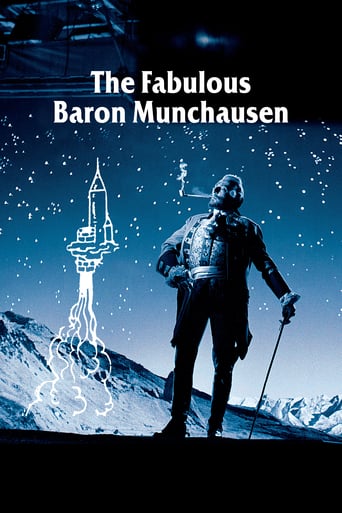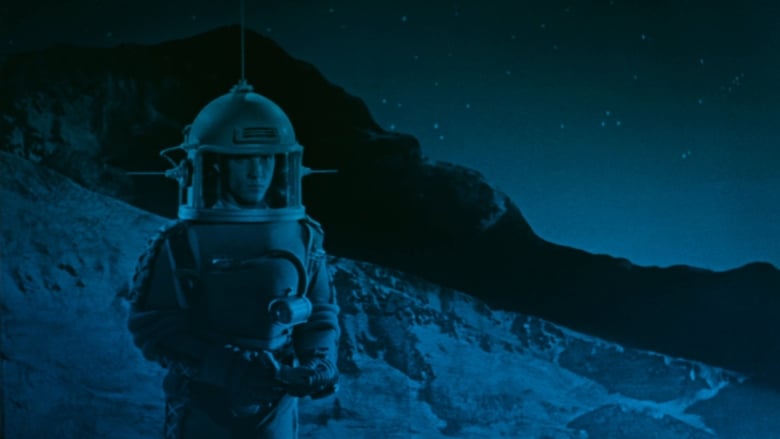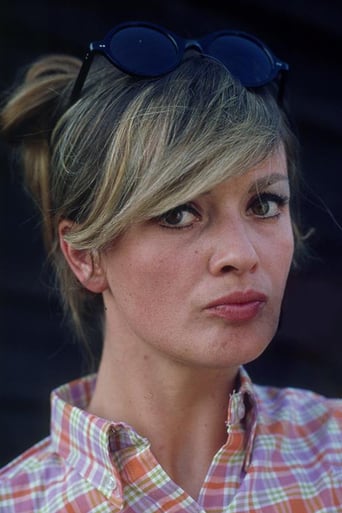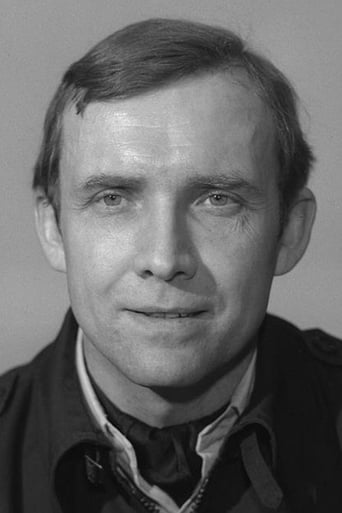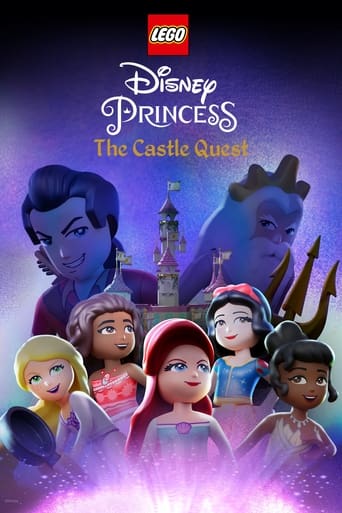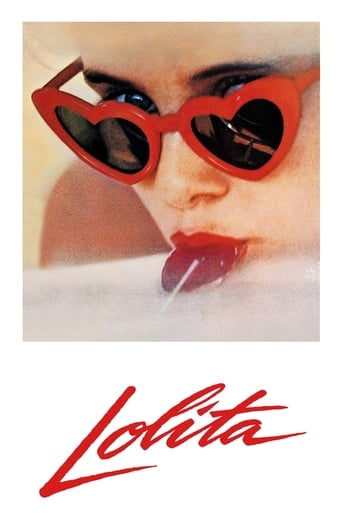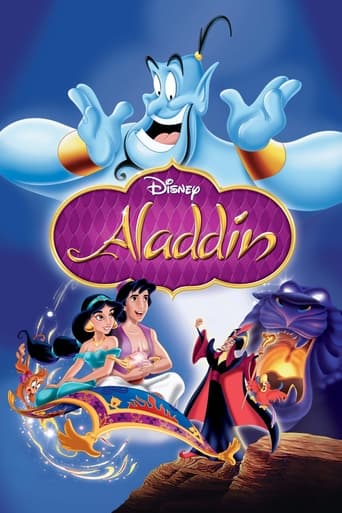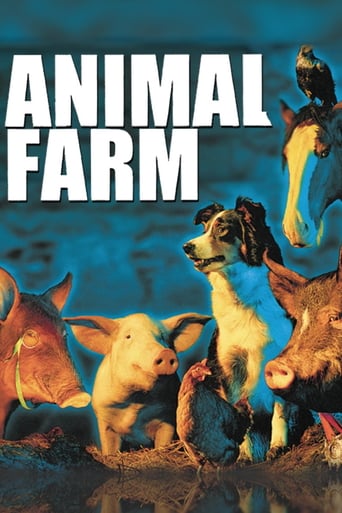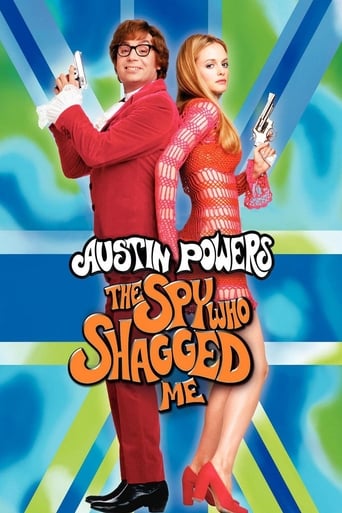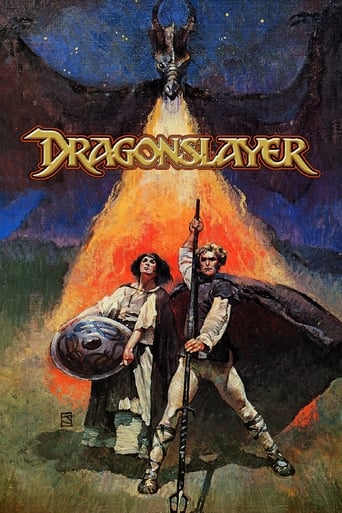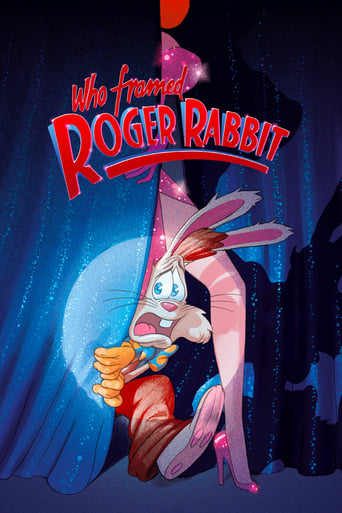The Fabulous Baron Munchausen (1962)
The 20th century's first man lands on the moon and discovers - that Baron Munchausen has already beaten him to it, along with Cyrano and characters from Jules Verne's lunar-landing novel. The Baron spirits the young cosmonaut by horse-drawn ship back to an ancient "Earth", where they insult a sultan, rescue a princess, fall in love with the princess, and then as a trio have further experiences in a world of pastel colors, ornate dreamlike settings, and the inevitable angry disrupters of peacefulness and love.
Watch Trailer
Cast


Similar titles
Reviews
Such a frustrating disappointment
Highly Overrated But Still Good
Pretty good movie overall. First half was nothing special but it got better as it went along.
Through painfully honest and emotional moments, the movie becomes irresistibly relatable
Very affective fantasy world with great colors. This movie wouldn't be anything without Karel Zeman. He brings the story to life with his interesting animation mixed with the filmed material. I can't say that the movie is all good or the best of Zeman, but you really can rest your eyes on the screen. Gilliam's version of the story is possibly a little better, but as these are so different, you can't really compare.Zeman's Sinbad the Sailor short films are much more important to me than this one. Their story is more interesting and the animation even more fun. Anyways..this movie is about a mysterious Baron who have been through all the exciting adventures and he tells about them.
By now, nearly everyone should be familiar with the Munchausen story or, at least, some portion of it even if shi didn't grown up on these German drinking boasts which got way out of hand. This is not the first or last treatment of the braggart Baron, but this version has a charm that many others lack. The film is shot, predominantly in sepia tone with occasional bits in exaggerated color for artistic emphasis. Those who recall the pink coat in Schindler's List will have some idea of what is happening. But, in this case, the effect is not so much an attempt to indicate a major event that was necessarily slighted in the film. Rather, it helps to emphasize the aspects of the fantastic and the fairy tale romanticism that the director is emphasizing. The live actors are shot against an animated background and are often blithely unaware of the fantastic things that are sweeping around them while they concern themselves with the essentially silly issues of their lives. This is Czech animation which seems rather exotic to those of us raised on Disney-esque 'realism'. Still, it's stylism adds a charm to the film that helps to reinforce the multiple layers that the director has built into this piece. You should not attempt to become involved in the film so much as to sit back and marvel at the world that is passing unobserved by those passing through it. When it has finished,you will want to watch it again and again to catch how all the different visual layers interact in your mind if not on the screen. If I had to compare this effect to any other film, I suppose I would choose the way that Altman weaves the foreground and background into the midground in "M*A*S*H", though the two films are very different and have completely different statements about the world. This is a fantasy and it is truly fantastic, but only on an adult level. Children will have many questions that all come down to 'why is it happening that way?' For children, fantasy is a chance to dream dreams and play games. This is a film for adults that has found an adult way to present the wit and contradiction of the original stories while acting out the ingenuousness of the characters' actions. See this one. It deserves your attention.
Zeman created a hugely imaginative version of the Munchausen story; he is a visualist along the lines of Georges Melies ("A Trip To the Moon") who, through his elaborate matte and composite shots, points the way to the boundless digital worlds of Lucas's "The Phantom Menace." Despite Zeman's trippy whimsy and resourcefulness with special effects, the film is mostly unengaging, due to slack direction and detached performances. The strongest elements are an exciting horseback chase sequence carried by a rousing score, and the Baron's perpetually pathological optimism, which is central to the story and acts as a hilarious counterpoint to the fantastic events in which he finds himself. Despite the film's faults, it has to be appreciated for Zeman's distinctive overall style, and how it must reflect the artistic sensibility of its day in Eastern Europe. (Interesting observation: the eerie Theremin chords which permeate the scene by the steamboat recall the same device used a few years later on the extraterrestrial sets on "Star Trek.") Zeman's style is said to be an influence on the work of Terry Gilliam (seen most sharply in his "Monty Python" cut-out animation). As far as comparing Gilliam's 1989 version of "Munchausen" to Zeman's, Gilliam's is definitely superior: more hedonistically fantastic, entertaining, and fun. For all of Zeman's craftsmanlike wonders, his version is indeed rickety in comparison, but must be admired for the heights of fantasy it reached with the considerably more limited resources available to him.
Karel Zeman was a genius if visual artistry. His playful use of 19th century engravings in a live-action movie is so original and it works so well. Everybody who praises the Gilliam's Munchhausen should hold the judgement until he sees this Munchhausen. If anybody from the video industry watches this database, please make this movie available at least on VHS. And once you are at it, I would add two more Zeman's films that are made with the same charm, technical wizardry, nostalgia and artistic vision: Vynalez zkazy (1958) ("The invention of Destruction" in English) and Blaznova kronika (1963) ("The Fools' Chronicles"). In the chronological order, I consider the three films a loose trilogy that uses the esthetics of the 19th, 18th, and 17th century, respectively, to study the timeless human situation.

